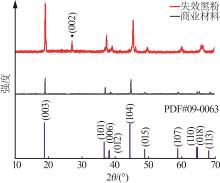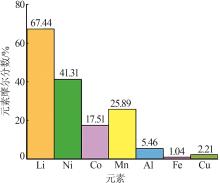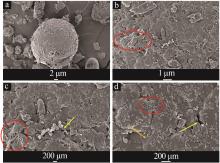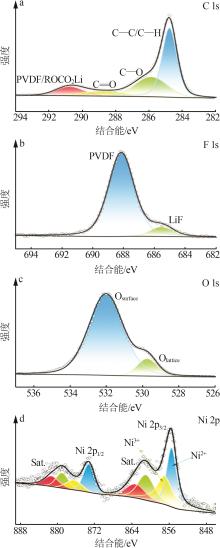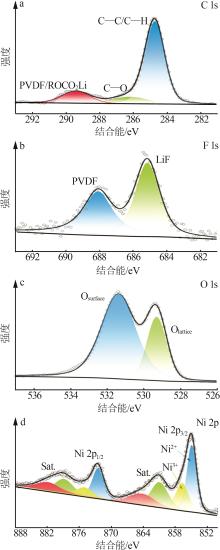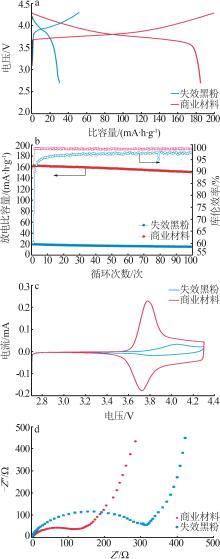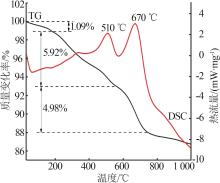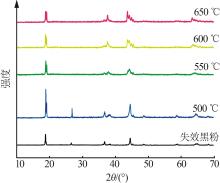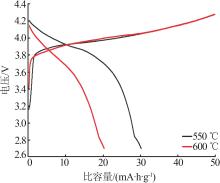| 1 |
BAI Yaocai, MURALIDHARAN N, SUN Y K,et al.Energy and environmental aspects in recycling lithium-ion batteries:Concept of battery identity global passport[J].Materials Today,2020,41:304-315.
|
| 2 |
HARPER G, SOMMERVILLE R, KENDRICK E,et al.Recycling lithium-ion batteries from electric vehicles[J].Nature,2019,575(7781):75-86.
|
| 3 |
ZHOU Mingxian, LI Bang, LI Jia,et al.Pyrometallurgical technology in the recycling of a spent lithium ion battery:Evolution and the challenge[J].ACS ES&T Engineering,2021,1(10):1369-1382.
|
| 4 |
WU Zhuoran,SOH T, CHAN Junjie,et al.Repurposing of fruit peel waste as a green reductant for recycling of spent lithium-ion batteries[J].Environmental Science & Technology,2020,54(15):9681-9692.
|
| 5 |
NATARAJAN S, ARAVINDAN V.Recycling strategies for spent Li-ion battery mixed cathodes[J].ACS Energy Letters,2018,3(9):2101-2103.
|
| 6 |
ZHENG Xiaohong, ZHU Zewen, LIN Xiao,et al.A mini-review on metal recycling from spent lithium ion batteries[J].Engineering,2018,4(3):361-370.
|
| 7 |
CIEZ R E, WHITACRE J F.Examining different recycling processes for lithium-ion batteries[J].Nature Sustainability,2019,2:148-156.
|
| 8 |
WU Jiawei, ZHENG Mengting, LIU Tiefeng,et al.Direct recovery:A sustainable recycling technology for spent lithium-ion battery[J].Energy Storage Materials,2023,54:120-134.
|
| 9 |
唐迪,王俊雄,陈稳,等.退役锂离子电池正极材料直接回收的研究现状和展望[J].无机盐工业,2023,55(1):15-25.
|
|
TANG Di, WANG Junxiong, CHEN Wen,et al.Research status and prospect on direct regeneration of cathode materials from retired lithium-ion batteries[J].Inorganic Chemicals Industry,2023,55(1):15-25.
|
| 10 |
CHEN Biaobing, LIU Min, CAO Shuang,et al.Direct regeneration and performance of spent LiFePO4 via a green efficient hydrothermal technique[J].Journal of Alloys and Compounds,2022,924:166487.
|
| 11 |
WANG Junxiong, ZHANG Qi, SHENG Jinzhi,et al.Direct and green repairing of degraded LiCoO2 for reuse in lithium-ion batteries[J].National Science Review,2022,9(8):nwac097.
|
| 12 |
LI Jian, HU Leshan, ZHOU Hongming,et al.Regenerating of LiNi0.5Co0.2Mn0.3O2 cathode materials from spent lithium-ion batteries[J].Journal of Materials Science:Materials in Electronics,2018,29(20):17661-17669.
|
| 13 |
WANG Tao, LUO Huimin, BAI Yaocai,et al.Direct recycling of spent NCM cathodes through ionothermal lithiation[J].Advanced Energy Materials,2020,10(30):2001204.
|
| 14 |
YANG Xuan, ZHANG Yingjie, XIAO Jie,et al.Restoring surface defect crystal of Li-lacking LiNi0.6Co0.2Mn0.2O2 material particles toward more efficient recycling of lithium-ion batteries[J].ACS Sustainable Chemistry & Engineering,2021,9(50):16997-17006.
|
| 15 |
HUANG Cheng, XIA Xue, CHI Ziwei,et al.Preparation of single-crystal ternary cathode materials via recycling spent cathodes for high performance lithium-ion batteries[J].Nanoscale,2022,14(27):9724-9735.
|
| 16 |
DENG Bowen, ZHOU Zihan, WANG Wenyu,et al.Direct recovery and efficient reutilization of degraded ternary cathode materials from spent lithium-ion batteries via a homogeneous thermochemical process[J].ACS Sustainable Chemistry & Engineering,2020,8(37):14022-14029.
|
| 17 |
GUO Yaqing, GUO Chi, HUANG Pengjie,et al.Rejuvenating LiNi0.5Co0.2Mn0.3O2 cathode directly from battery scraps[J].eSci- ence,2023,3(2):100091.
|
| 18 |
XING Chunxian, Haoran DA, YANG Peng,et al.Aluminum impurity from current collectors reactivates degraded NCM cathode materials toward superior electrochemical performance[J].ACS Nano,2023,17(3):3194-3203.
|
| 19 |
SHI Yang, CHEN Gen, LIU Fang,et al.Resolving the compositional and structural defects of degraded LiNi x Co y Mn z O2 particles to directly regenerate high-performance lithium-ion battery cathodes[J].ACS Energy Letters,2018,3(7):1683-1692.
|
| 20 |
GUPTA V, YU Xiaolu, GAO Hongpeng,et al.Scalable direct recycling of cathode black mass from spent lithium-ion batteries[J].ECS Meeting Abstracts,2023,2023(2):608.
|
| 21 |
MENG Xiangqi, HAO Jie, CAO Hongbin,et al.Recycling of LiNi1/3Co1/3Mn1/3O2 cathode materials from spent lithium-ion batteries using mechanochemical activation and solid-state sinter- ing[J].Waste Management,2019,84:54-63.
|
| 22 |
ZHA Yunchun, FEI Zitong, YANG Zelong,et al.High separation efficiency of ternary cathode materials from spent lithium-ion batteries by ternary molten Li-salt method[J].Sustainable Materials and Technologies,2023,35:e00575.
|
 ), JI Renfei1,2, CHEN Jun1,2(
), JI Renfei1,2, CHEN Jun1,2( ), LIN Sen1,2(
), LIN Sen1,2( ), YU Jianguo1,2
), YU Jianguo1,2
